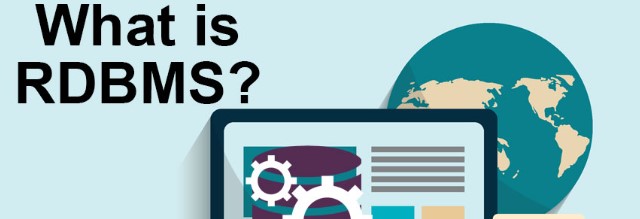Here’s a detailed blog post on the topic “What Does RDBMS Stand For?”
What Does RDBMS Stand For? A Complete Guide
In the world of data and databases, the term RDBMS is one of the most important and widely used concepts. But what exactly does RDBMS stand for, and why is it so important? In this blog, we’ll explore the meaning of RDBMS, how it works, and why it’s used in almost every modern application that stores and manages data.
What is RDBMS?
RDBMS stands for Relational Database Management System.
It is a type of database management system (DBMS) that stores data in a structured format using rows and columns. The “relational” part means that the data is organized into tables that relate to each other based on common data elements.
Popular examples of RDBMS software include:
- MySQL
- PostgreSQL
- Oracle Database
- Microsoft SQL Server
- SQLite
Key Components of an RDBMS
Let’s break down the essential elements of an RDBMS:
1. Tables
Data in an RDBMS is stored in tables. Each table represents a different type of entity, such as Customers, Orders, or Products.
2. Rows and Columns
- Rows: Each row in a table represents a single record.
- Columns: Each column represents a field of data, like name, date of birth, or address.
3. Primary Keys
A primary key is a unique identifier for each record in a table. It ensures that no two rows are exactly the same.
4. Foreign Keys
A foreign key is a column that creates a relationship between two tables. It links the data from one table to another.
5. SQL (Structured Query Language)
RDBMS uses SQL to manage and query data. You can use SQL to:
- Insert new data
- Update existing records
- Delete records
- Fetch data using queries
📊 Why Use an RDBMS?
Here are some key reasons why RDBMS is so popular:
✅ Data Integrity
RDBMS ensures that data is accurate and consistent using constraints like primary keys, foreign keys, and unique constraints.
✅ Scalability
Modern RDBMS systems can handle huge amounts of data and many users at once.
✅ Security
Access control features allow admins to manage who can view or edit specific data.
✅ Flexibility
You can create relationships between data and run powerful queries to find exactly what you need.
✅ Backup and Recovery
Most RDBMS platforms support automatic backups and data recovery options to protect against data loss.
🔄 How Tables Relate in RDBMS
Let’s say you have two tables:
Customers Table
| CustomerID | Name | |
|---|---|---|
| 1 | Alice | alice@email.com |
| 2 | Bob | bob@email.com |
Orders Table
| OrderID | CustomerID | Product |
|---|---|---|
| 101 | 1 | Laptop |
| 102 | 2 | Smartphone |
Here, CustomerID in the Orders table is a foreign key that relates to the CustomerID in the Customers table. This way, you can easily find which customer placed which order.
🔁 Difference Between DBMS and RDBMS
| Feature | DBMS | RDBMS |
|---|---|---|
| Data Structure | Data is stored as files | Data is stored in tables |
| Relationships | No relationships | Uses primary and foreign keys |
| Normalization | Not supported | Supports data normalization |
| Multi-user access | Limited | Supports multiple users |
Conclusion
RDBMS, or Relational Database Management System, is a powerful tool that helps organizations store, manage, and retrieve data efficiently. Whether you’re running a small business or building a global app, chances are you’re relying on an RDBMS in some way.
Learning how RDBMS works and how to use SQL can open up many opportunities in tech fields like data science, software engineering, and web development.
Want to learn more? Ask away! Or start experimenting with a free RDBMS like MySQL or PostgreSQL today!
